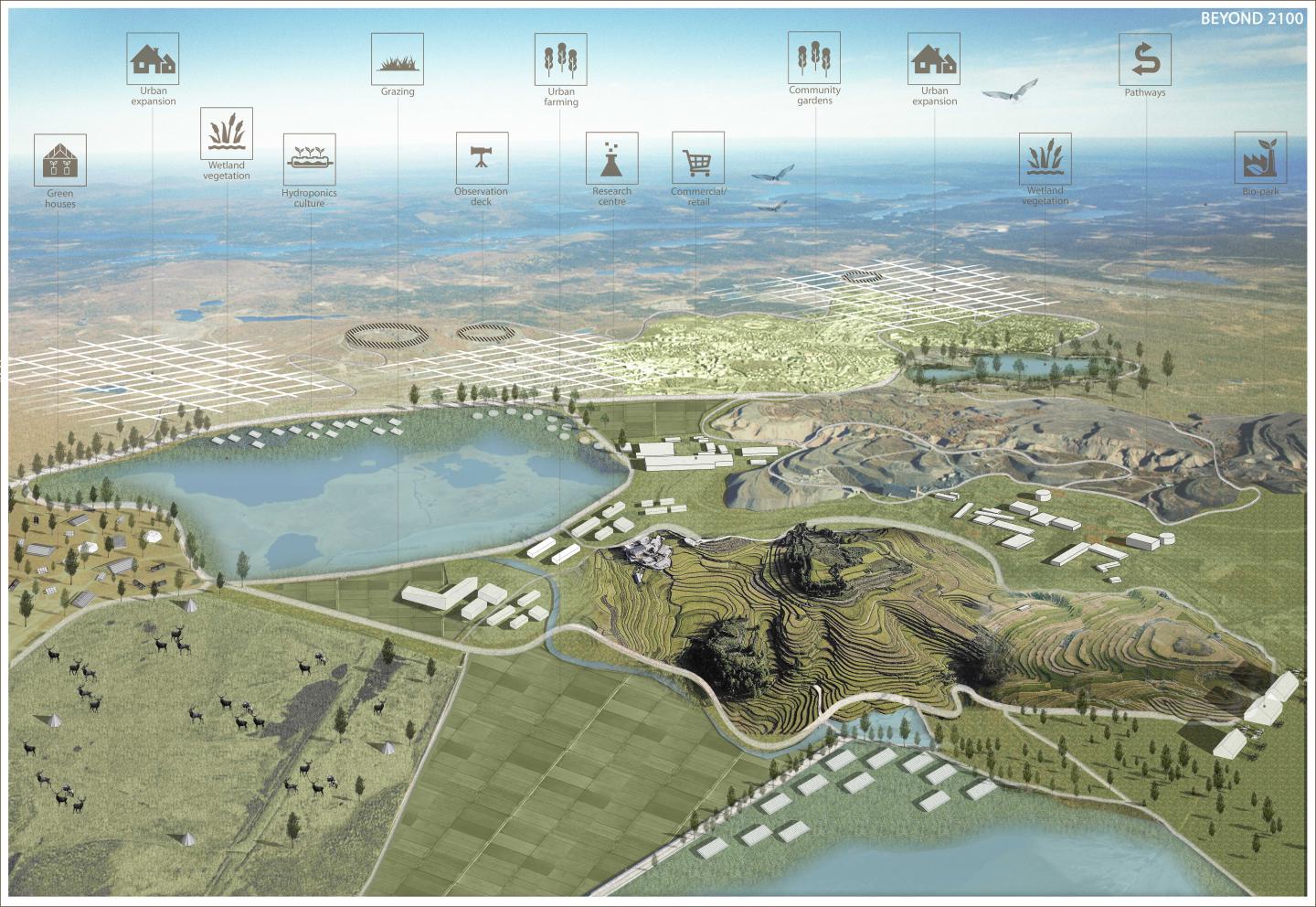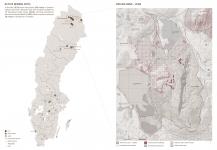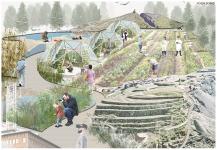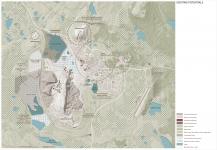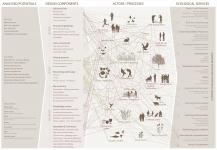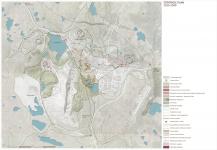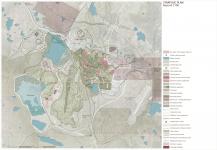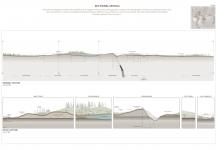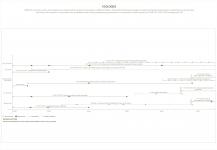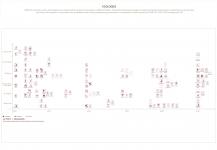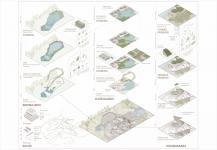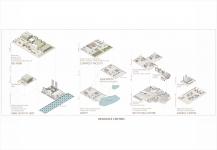In brownfield regeneration models, extraction sites are often left out of the question because of degradation, severe contamination, or economic viability and are usually abandoned after minimal remediations. These exhaustions impact the environment and economy in spatial relations and influence the growth of the communities cultured by them. With millions of abandoned sites worldwide, there is a demand for building a vision that develops - the ideas of emergence and diversification over time and space, as a base framework for similar towns and communities before they disappear.
Underpinning the urgent need and evolving theme of ecologies, 'Reclaiming Kiruna' is an investigation of a vision for a post-exhaustion site of Kiruna mine, which is the world's largest underground mine in Sweden, by developing landscape ecologies in the present framework that builds and adapts with time and space before the mine gets exhausted.
The project reveals the concept of landscape as an amalgamation of production and recreation ecologies, synergizing with the existing potentials of nature, resources, and society. The work focuses on translating the knowns and unknowns of three time periods (2020-2040, 2040-2100 & Beyond 2100), synced with the proposed plans of the New Kiruna settlement area, through programs of care and thinking that involve, engage, and encourage people (of Kiruna) to redefine the image of Kiruna beyond just a mine. The project unfolds new prospects offered by planned urban transformations, mining systems, and changing climate, integrated into building new economies and relations.
The uncertainty of the future limits the scope and definiteness of the project. However, it attempts to initiate a dialogue in finding new positions as urban designers to contest with the present frameworks in building alternatives of change and novelty for a sustainable future.
Concept:
This thesis's context is a small yet economically viable mining town of Kiruna, located in Lapland's northernmost geography with 23,000 people. Enriched with subarctic natural systems and boosted by iron-ore mining's mono-cultural economy, Kiruna has constantly proved to be transforming spatially, socially, and temporally. Over the past 100 years, the continuous expansion of mining activities has led to above and below ground alterations, influencing Kiruna's body [spatial] and soul [community]. Recent deformation dangers of the running underground extractions have led to a decision of moving the whole town to about 2 km in the east. With the ambitious idea of Kiruna' 4-ever' based on new design plans, the decision is being scrutinized and has found to be under many conflicting interests, whether related to the currently living community, concerning their roots, identity, and memory of a place as well as for indigenous natives, Sami who are struggling to protect their land rights. Amid these issues, there are still many questions left unexplored. And one of the biggest questions is
'Is there a sustainable future of Kiruna beyond mining?'
Questioning the normative action plan in developing urban environments, this thesis instead focuses on igniting a sense of 'care'; to create a relationship through a process of thinking and knowing, where not only this relation involves care but care in itself is relational. Quoted by Joan Tronto and Berenice Fishermuch to express the vision of 'care' explored through different design strategies in the project is that 'everything we do to maintain continues and repair "our world" to live in it as well as possible. That world includes our bodies, our selves, and our environment, all of which we seek to interweave in a complex, life-sustaining web' (Tronto, 1993: 103, my emphasis). This vision of caring to develop these landscape ecologies speaks of those doings needed to create, hold together, and sustain heterogeneous interdependent forms and processes of life and matter, which inevitably emerges into a relation. This relation can bring a paradigm shift in reinforcing the frameworks for these design processes and models, moving beyond mere "problem solving" towards exploring new synergies, adaptations, appropriations, and transformations through the lens of emerging ecological complex systems theory and the concept of resilience.
The focal point of this project is to explore development ideas from decision-making authorities' perspective for the growth of Kiruna and position design, in research or practice, as an inherent combination of the critical and suggestive; of analysis and innovation.
2020
0000
"Reclaiming" sets out in three major themes of RESTORE, REVIVE and REGENERATE, and this vision builds on the notion of emerging ecologies, where a landscape evolves into ecologies of production and recreation, created by the people of Kiruna, as a network of associations that experiments and grows as it learns. The developed proposal runs over three different periods. The first one, 2020-2040, explores the upcoming planned condition for the next 20 years of New Kiruna's urban transformation. The second period, 2040-2100, investigates predicted yet uncertain economic and environmental conditions around Kiruna mines, which is still active, to find new adaptations. Furthermore, the third scenario is developed on reclaiming Kiruna beyond 2100 or so, in a condition of exhausted degraded mine. All of the three timelines explored under certain presumptions of unknowns are integrated with the strategies to provide flexibility as an 'open-system that over time allows for communing and caring along with cultivating creative thinking in emerging diverse economies. (Gibson-Graham)
The anthropocentric and biocentric design proposal is built for synergetic overlaps between multi-scale structures, systems, and networks, to provide an underlying framework and composition- socio-ecological infrastructure- that flows through and binds together public activity and engagement open spaces, development strands, and amplified valuable nature areas. There is also experimentation with setting up 'Bio-economy' integrated into the project to investigate new Arctic region and community potentials with a high aspiration of a circular economy.
Diksha Anand
Favorited 1 times
